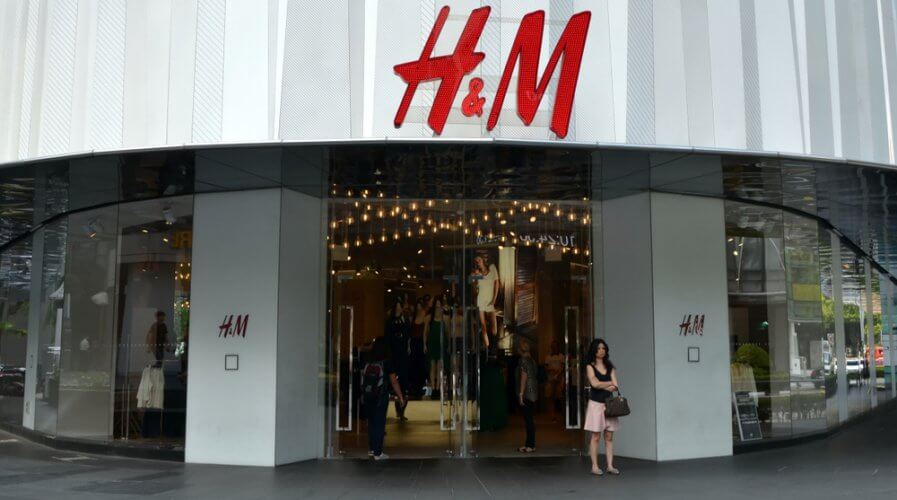
H&M has a strong presence in the APAC. Source: Shutterstock
H&M seeks to retail smarter with more data analytics this year
DESPITE the colossal rise of e-commerce, not all brick-and-mortar retailers are struggling to survive. Some, like Hennes & Mauritz (H&M), are thriving despite the odds — thanks to data, analytics, AI, and other technologies.
H&M started in Västerås (Sweden) as womenswear store Hennes in 1947. Today, the company is a fashion retail giant with 4,968 stores in 71 markets.
Although the retail industry is struggling, the company hasn’t suffered as much as some of its peers. Instead, it heeded the advice of the proverb “if you can’t beat them, join them”, and established a strong e-commerce presence of its own.
Of the 71 markets it operates in, H&M offers online retail in 47 markets.
The company also has a strong affinity for Asia, as do Asians for the brand. The company has 530 stores in China, 26 in Hong Kong, 39 in India, 2 in Macau, 47 in Malaysia, 34 in the Philippines, 12 in Singapore, and 12 in Taiwan. H&M also has 44 stories in Australia and 4 in New Zealand.
In comparison, H&M has just 304 retail stores in the UK, and in all of the US, the company owns 578 stores.
Fortunately, it’s not a case where the company is simply investing (or collaborating) and opening stores across the world.
H&M’s sales have grown year on year, for the period between 2013 and 2017, and although operating margins have reduced slightly over time, the company has consistently been hiring more people and opening new stories every year. The company is doing better than it has ever done before — and technology is its secret weapon.
How did H&M manage to succeed?
Well, the company listens to its customers. Literally.
H&M has a lot of data about its customers — and it’s not shy to use that data to gain a competitive edge in the tough retail marketplace.
According to a Wall Street Journal last year, the company has started using big data and AI to customize the merchandising mix of individual stores.
Further, the company said it aimed to reduce markdowns by using algorithms to analyze store receipts, returns, and loyalty-card data.
Back then, the company was trialing the technology in a store in Stockholm’s upscale Östermalm neighborhood — and according to latest news reports, it seems as though the company is ready to scale up those capabilities.
The company has hired Cambridge Analytica whistleblower Christopher Wylie to “help the company use big data and artificial intelligence to make sure it actually designs things shoppers want”.
“If you better understand what people like to wear, and how they like to wear it, and how they want to feel when they’re wearing it, you’ll naturally start to create insights as to modernizing and updating your collection,” Wylie told media from H&M HQ in Stockholm recently.
Previous to working for Cambridge Analytica, Wylie worked as a fashion-trends forecaster, which is what caught H&M’s attention and give them the idea that he might be a good candidate to take the company’s data and AI efforts forward.
“We’ve invested a lot in AI, and we’re still in the beginning of the journey. Now we need to go from the test phase to scaling it out to different parts of our operation,” said H&M Chief Executive Karl-Johan Persson.
H&M’s tryst with technology not limited to data & AI
In today’s day and age, simply using AI and data isn’t enough to keep customers engaged. And H&M understands that.
The company has been working on exciting technology-driven projects that not only aim to drive up revenues, but also win customers’ hearts — across all lines of business.
Recently, for example, H&M announced that it was developing the H&M Home Stylist. Designed as a voice application on the Google Assistant, the project is intended to provide personal styling suggestions, mood boards, and inspiration for every room in the home.
To make the experience even more personal, H&M said that the application will have an exclusive human voice.
The company also announced a collaboration with Monki and HoloMe for an avant-garde test of high-definition human holograms in Augmented Reality, accessible through a smartphone or tablet with minimal data usage, turnaround time, and processing power.
“Images of nine selected Monki outfits are enhanced with digital effects, allowing the viewer to monitor the garments in great details and experience the holograms as being present in the room,” said a company news release.
Needless to say, these initiatives have been well-received in the market, exciting customers all over the world. Through these projects and announcements, H&M is making sure that technology can transform its business — not disrupt it.
READ MORE
- Ethical AI: The renewed importance of safeguarding data and customer privacy in Generative AI applications
- How Japan balances AI-driven opportunities with cybersecurity needs
- Deploying SASE: Benchmarking your approach
- Insurance everywhere all at once: the digital transformation of the APAC insurance industry
- Google parent Alphabet eyes HubSpot: A potential acquisition shaping the future of CRM






